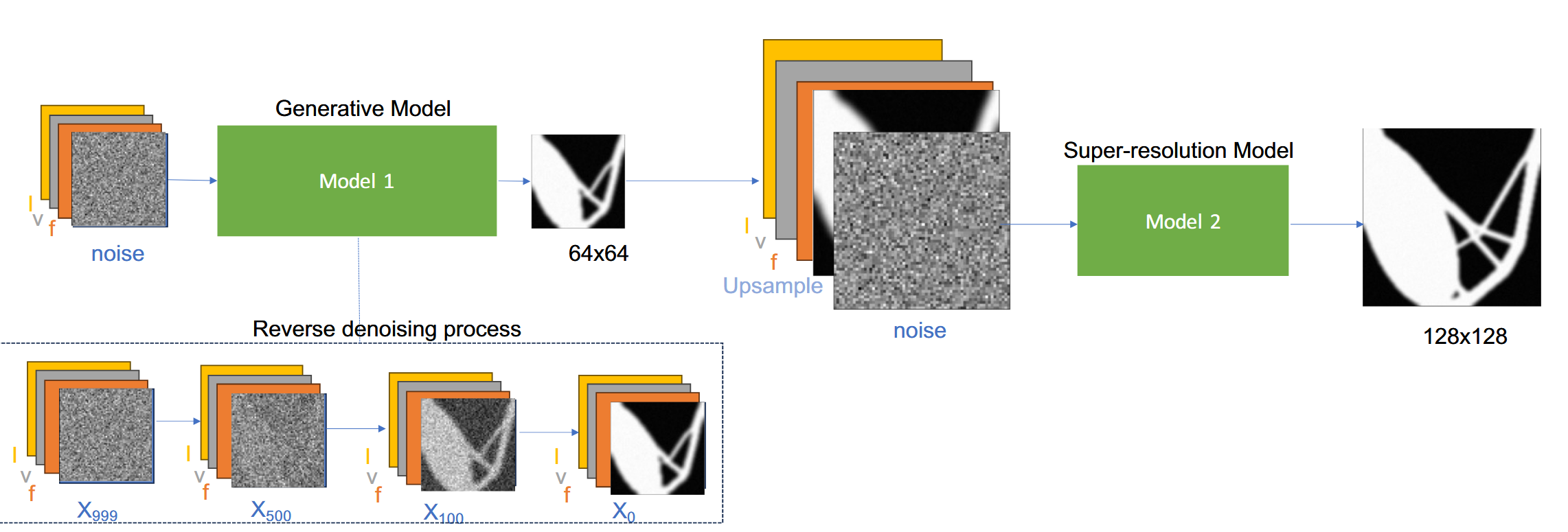Inverse Design

Inverse Design involves training a Machine Learning model to predict the optimal design for a problem given a new set of inputs or requirements. For example, predicting the most efficient airfoil or wing given a target Reynolds, Mach, and target Lift Coefficient, as in external page our 2022 Conditional Entropic BézierGAN paper, or predicting an optimal meta-material unit cell microstructure given a target Youngs Modulus or Poisson's Ratio as in external page our 2022 CMAME paper.
We have found that performing Inverse Design can often predict in under a second designs that lie within 90-95% of the optimal performance of designs that are optimized via more expensive computational means (e.g., directing optimizing a shape or topology using adjoint methods). This makes them an attractive early-stage design technique for quickly searching through an array of options before doing detailed design on a given problem.
Some application areas where we have built Inverse Design models include:
- Airfoil Geometry using both external page GAN models and external page Diffusion Models
- external page Heat Sinks and Exchangers using Vector-Quantized VAEs
- external page Heat Conduction problems
- external page Meta-Material Unit Cell Structures
- external page 2D Topologically Optimized Beam Structures